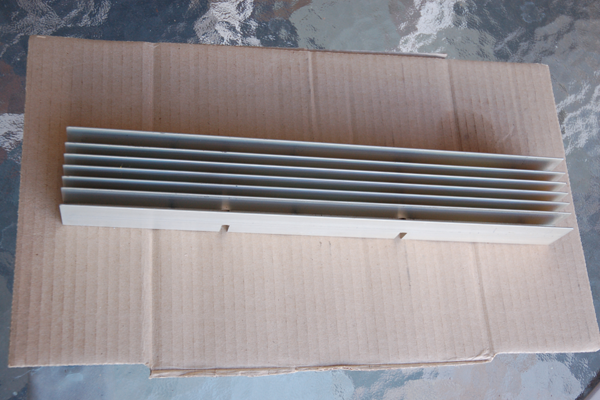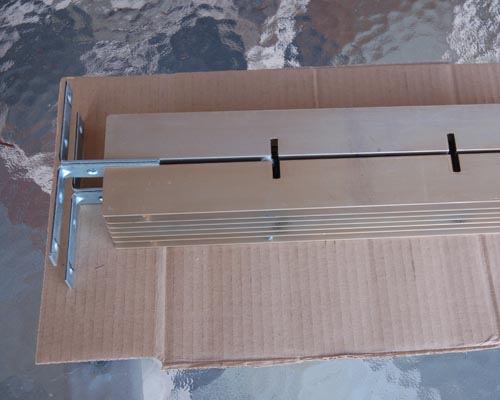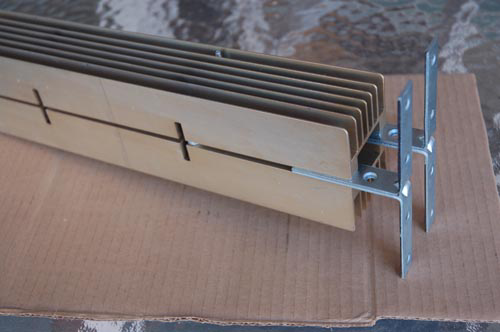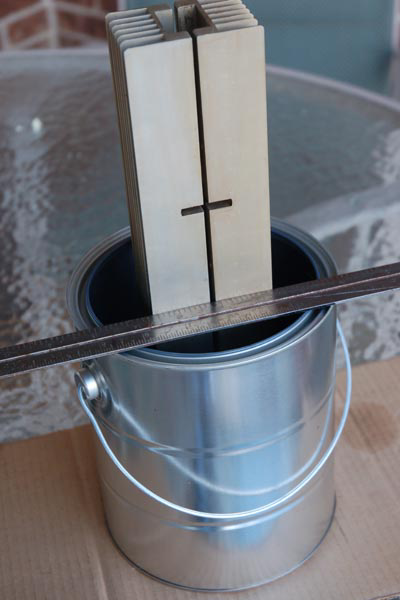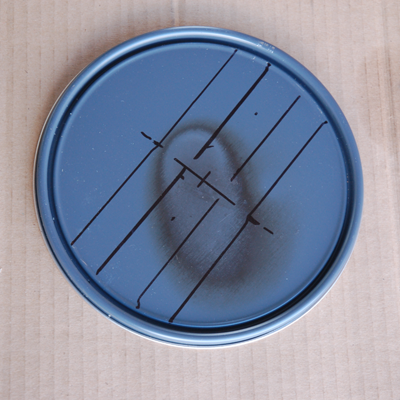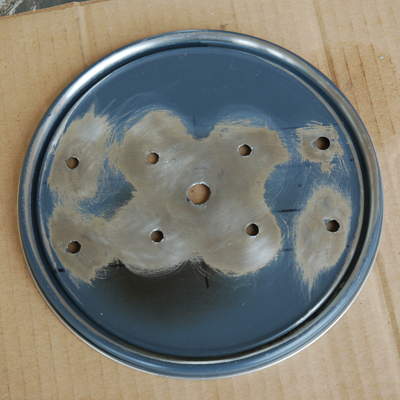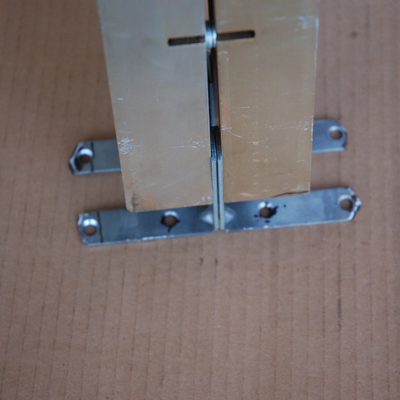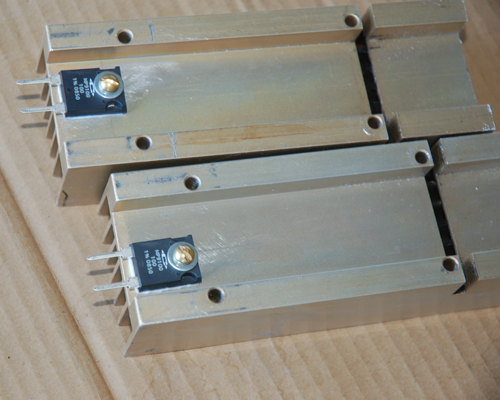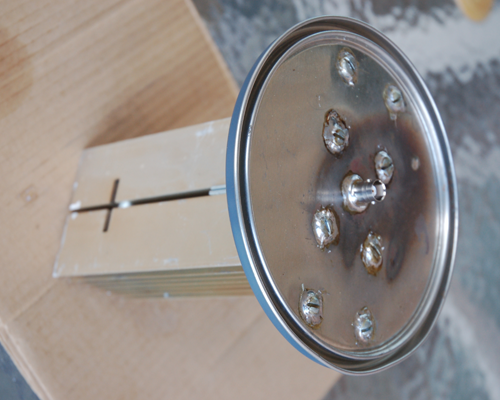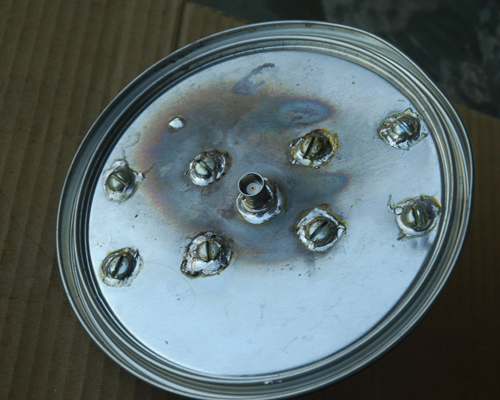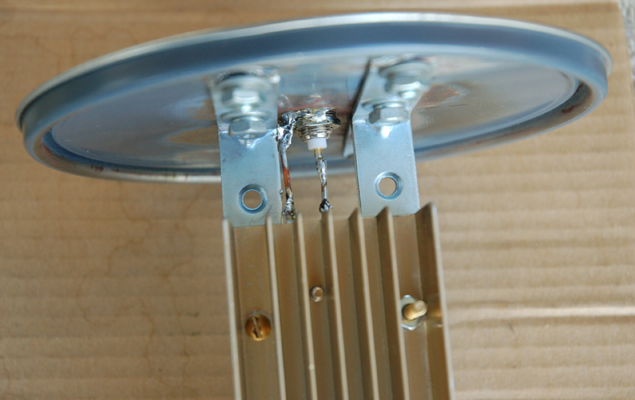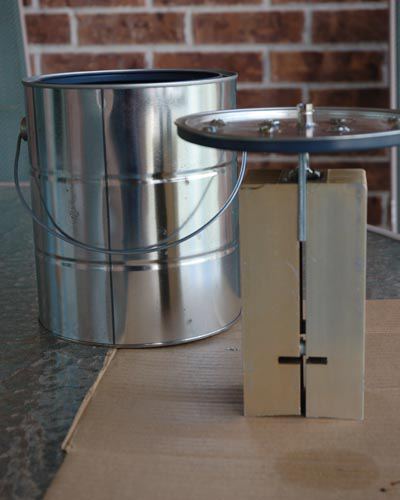|
As kilowatt dummy load is necessary when working on high powered transmitters. The ideal dummy load
should be 50 ohms impedance so two precision Braddock non-inductive 100 ohm 100 watt resistors are used in parallel. This
results in a high precision impedance of 50 ohms. The usable power level
with with a heat absorbing dielectric oil should safely dissipate a full kilowatt. Because of the heat sinks used,
the usable power level without the heat absorbing dielectric oil should be a full 200 watts.
|
|
Some humongous heat sinks were picked up at surplus place. They just screamed dummy load at first sight.
|
|
Right angle brackets were bolted to the heat sinks.
|
|
The right angle brackets also served as spacers.
tight
|
|
A new gallon paint can was chosen to be the external shield for the kilowatt dummy load. The heat sinks need to
be cut off to a length that will fit into the can.
|
|
The inside of the paint can lid was marked off to drill mounting holes for the heat sink brackets. The mounting hole
for the outside coax connector was also marked off at this time.
|
|
All the mounting holes were drilled and the finish on the bottom of the lid sanded off to ensure a good ground. At this
time the decision was made to use a BNC connector as no kilowatt transmitter was envisioned at this location.
|
|
The heat sink brackets have to be tapered in order to fit inside the lid.
|
|
The heat sinks and brackets were disassembled, cut to the correct length, and the two Braddock precision
resistors bolted to the heat sinks.
|
|
The heat sinks and brackets were resassembled and bolted to the can lid.
|
|
Notice the BCN connector and bracket bolts are soldered to the lid.
|
|
The internal wiring is completed at this time. One wire to the BNC connector and the other to ground.
|
|
If you are going for the full kilowatt, fill the can with a good grade of heat absorbing dielectric oil and put the lid
on. Otherwise, just put the lid on.
|
